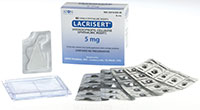Relief is at Hand
 Right when we want to free ourselves of glasses and enjoy the warmth of summer, the dry, air-conditioned air makes our dry eyes worse making it more difficult to wear contact lenses. Symptoms of dry eye syndrome peak during the summer months. Thankfully, the doctors at Total Eye Care have achieved great success in treating patients with dry eyes and now have many new dry eye treatment options that were not available only a few years ago, including a new, patented nutritional supplement clinically proven to help patients with dry eyes.
Right when we want to free ourselves of glasses and enjoy the warmth of summer, the dry, air-conditioned air makes our dry eyes worse making it more difficult to wear contact lenses. Symptoms of dry eye syndrome peak during the summer months. Thankfully, the doctors at Total Eye Care have achieved great success in treating patients with dry eyes and now have many new dry eye treatment options that were not available only a few years ago, including a new, patented nutritional supplement clinically proven to help patients with dry eyes.
Common Symptoms of Dry Eyes
- Do your eyes bother you at the end of the day?
- Do you look forward to taking your contact lenses out at the end of the day?
- Are you light sensitive?
- Do your contact lenses feel ok when you put them in, but as the day goes on they feel worse and worse?
- Have you tried numerous types of contact lenses only to give up because all of them bother you?
- Are your eyes often red and gritty?
If any of these situations sound like you, meaningful relief is available. There is no need to continue putting up with chronic discomfort. Using artificial tears is not enough. Fortunately, comfortable vision is available to you with many of the new dry eye treatment options available.
Patented Dry Eye Relief
Better Options Than Artificial Tears
Total Eye Care’s Dry Eye Treatment Paradigm incorporates a clinically proven, patented nutritional supplement with medications and tear preservation procedures to help relieve a patient’s dry eye symptoms.
Dry eye syndrome treatment does not have a quick fix for symptomatic relief; rather it requires a systematic, proven approach to enhance our patient’s comfort and vision. Successful treatment often involves multiple methods to provide optimal comfort for both contact lens wearers and non-contact lens wearers alike.
Effective treatment may involve a change in contact lens type or modality, preservation of your own tears, nutritional supplements, prescription medications or even changes in contact lens solution. In some cases, a non-contact lens wearer may actually find wearing the right kind of contact lenses, in association with other treatments, markedly improves their comfort. Effective dry eye treatment requires a systematic approach from an expert familiar with all aspects of the condition.
Total Eye Care’s Dry Eye Experts are Here to Help
As you can see we have many treatment options available to us. The doctors at Total Eye Care have helped countless patients recover from the problems associated with dry eyes. If you would like to experience the better comfort available with the new dry eye treatments contact the dry eye experts at Total Eye Care, relief is only a phone call away.
To get started call us at 817.416.0333
or schedule online. We are here to help you.


